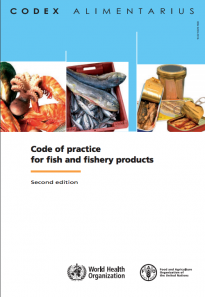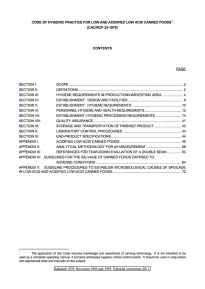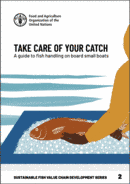Regulatory Environment for Canning
The Codex Alimentarius Code of Practice for Fish and Fishery Products is a reference point for the production of canned fish. As stressed by this Code, the application of appropriate elements of the prerequisite program and hazard analysis and critical control points (HACCP) principles will provide the processor with reasonable assurance that the essential quality, composition and labelling provisions of the appropriate Codex Standard will be maintained and food safety issues controlled.
Guidance Related to Food Loss and Waste (FLW) Control
Guidance Related to Food Loss and Waste (FLW) Control
Some of the guidance related to food loss and waste (FLW) control includes:
- Design, working and maintenance of baskets and handling and loading devices aimed at retorting should be appropriate for the kinds of containers and materials used. These devices should prevent any excessive mishandling of the containers.
- An adequate number of efficient sealing machines should be available to avoid undue delay in processing.
- Retorts should have a suitable supply of energy, vapor, water and/or air so as to maintain in them sufficient pressure during the heat treatment of sterilization; their dimensions should be adapted to the production to avoid undue delays.
- Every retort should be equipped with an indicating thermometer, a pressure gauge and a time and temperature recorder.
- An accurate, clearly visible clock should be installed in the retorting room.
- Canneries using steam retorts should consider installing automatic steam controller valves.
- Instruments used to control and to monitor, in particular, the thermal process should be kept in good condition and should be regularly verified or calibrated.
- Calibration of instruments used to measure temperature should be made in comparison with a reference thermometer. This thermometer should be regularly calibrated. Records concerning the calibration of instruments should be established and kept.
Monitoring and Control
Monitoring and Control
FLW can result from inadequate monitoring and control of the following:
- Biotoxins, such as tetrodotoxins or ciguatoxins, are known to be generally heat stable, hence knowledge of the identity of the species and/or the origin of fish intended for processing is important. Phycotoxins such as diarrheic shellfish poisoning (DSP), paralytic shellfish poisoning (PSP) or amnesic shellfish poisoning (ASP) are also heat stable, hence it is important to know the origin and the status of the area of origin of molluscan shellfish or other affected species intended for processing. Histamine is heat stable, and so its toxicity remains practically intact in containers. Good practices for the conservation and handling from capture to heat processing are essential to preventing histamine production. In its Standards for some fish species, the Codex Commission adopted maximum levels tolerated for histamine.
- Microbiological toxins, such as Clostridium botulinum. The botulism risk usually appears after inadequate heat processing and inadequate container integrity. The toxin is heat sensitive. On the other hand, the destruction of Clostridium botulinum spores, in particular from proteolytic strains, requires high sterilization values. The effectiveness of the heat processing depends on the contamination level at the time of the treatment. Therefore, it is advisable to limit proliferation and the contamination risks during processing. A higher risk of botulinum could result from any of the following: inadequate heat processing, inadequate container integrity, unsanitary post-process cooling water, or unsanitary wet conveying equipment.
- Toxins from Staphylococcus aureus can be present in a highly contaminated raw material or can be produced by bacterial proliferation during processing. After canning, there is also the potential risk of post-process contamination with Staphylococcus aureus if the warm wet containers are handled in an unsanitary manner. These toxins are heat resistant, so they have to be considered in the hazard analysis.
Care should also be taken to avoid contamination of the product from components of the containers (e.g. lead) and chemical products (lubricants, sanitizers, detergents). Containers prior to filling may contain materials such as metal or glass fragments.
FLW Control Information
FLW Control Information
FLW control information is provided according to the following topics in the Code Of Hygienic Practice For Low And Acidified Low Acid Canned Foods:
- hygiene requirements in production/harvesting area
- establishment: design and facilities
- establishment: hygiene requirements
- personnel hygiene and health requirements
- establishment: hygienic processing requirements
- quality assurance
- storage and transportation of finished product
- laboratory control procedures
- end-product specifications
- guidelines for the salvage of canned foods exposed to
- adverse conditions
- guideline procedures to establish microbiological causes of spoilage in low-acid and acidified low-acid canned foods
Key Publications
Code of Practice for Fish and Fishery Products Codes of practice and guidelines designed to help meet standards and comply with legislation (e.g the Codex Alimentarius Code of Practice for Fish and Fishery Products). | |
Code Of Hygienic Practice For Low And Acidified Low Acid Canned Foods This Code of practice is concerned with the canning and heat processing of low-acid and acidified low-acid foods as defined in this Code, packed in hermetically sealed containers. |
More Resources
More Resources
31 October 2023













